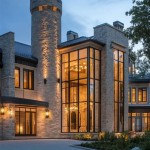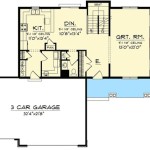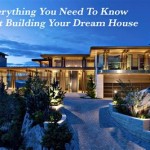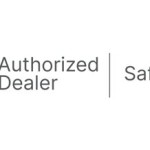House planning layout refers to the arrangement and organization of spaces within a residential building. It involves determining the location, size, and interconnections of rooms, hallways, stairs, and other functional areas to create a cohesive and efficient living environment. For instance, in a typical single-family home, the layout might include a living room, kitchen, dining room, bedrooms, bathrooms, and a garage, all interconnected in a way that maximizes space utilization and convenience.
The layout of a house plays a crucial role in its overall functionality, comfort, and aesthetic appeal. It influences factors such as natural light distribution, privacy, traffic flow, and the ease with which occupants can perform daily activities. Careful planning and consideration of the occupants’ needs and lifestyle preferences are essential to create a layout that meets their specific requirements and enhances their quality of life.
In the following sections, we will delve into the various aspects of house planning layout, exploring different design principles, functional considerations, and innovative approaches to optimizing space and creating comfortable and practical living environments.
Eight important considerations for house planning layout:
- Functional flow
- Natural light
- Privacy
- Space utilization
- Traffic patterns
- Accessibility
- Storage solutions
- Aesthetic appeal
By carefully considering these factors, homeowners can create a layout that meets their specific needs and enhances their quality of life.
Functional flow
Functional flow refers to the smooth and efficient movement of people and activities through a house. A well-planned layout minimizes unnecessary steps, creates logical transitions between spaces, and ensures that common areas are easily accessible from other parts of the house.
- Create a central gathering space. The living room, kitchen, or family room should be the heart of the home, a place where people can gather, socialize, and relax. This space should be easily accessible from other areas of the house.
- Locate related activities near each other. For example, the kitchen should be close to the dining room and pantry, and the bedrooms should be near the bathrooms. This reduces unnecessary steps and makes it easier to perform daily tasks.
- Minimize hallways and corridors. While some hallways are necessary, excessive hallways waste space and can make a house feel disjointed. Consider using open floor plans or pocket doors to create more flexible and efficient spaces.
- Provide clear circulation paths. People should be able to move through the house without having to squeeze past furniture or navigate obstacles. Ensure that there is enough space for people to walk comfortably and that doorways and hallways are wide enough.
By carefully considering functional flow, homeowners can create a layout that is both comfortable and efficient, making it easier to perform daily activities and enjoy their home to the fullest.
Natural light
Natural light is essential for creating a healthy and inviting living environment. It can improve mood, boost productivity, and reduce energy consumption. When planning a house layout, it is important to consider how to maximize natural light in all areas of the home.
- Orient the house to take advantage of the sun’s path. In the Northern Hemisphere, south-facing windows will receive the most sunlight throughout the day. In the Southern Hemisphere, north-facing windows will receive the most sunlight. Consider the placement of windows and rooms to ensure that they receive ample natural light.
- Use large windows and skylights. Large windows and skylights allow more natural light to enter the home. Consider using floor-to-ceiling windows in living areas and bedrooms to create a bright and airy feel. Skylights can be used to bring natural light into interior spaces that don’t have windows, such as hallways and bathrooms.
- Minimize obstructions to natural light. Avoid placing furniture or other objects in front of windows that may block sunlight. Also, consider the placement of trees and shrubs around the house to ensure that they do not block natural light from entering the home.
- Use reflective surfaces. Reflective surfaces, such as mirrors and light-colored walls, can help to bounce natural light around a room and make it feel brighter. Consider using mirrors opposite windows to reflect light into darker areas of the room.
By carefully considering natural light in the house planning layout, homeowners can create a home that is filled with natural light, which can improve their mood, boost their productivity, and reduce their energy consumption.
Privacy
Privacy is an important consideration for house planning layout. Homeowners want to feel comfortable and secure in their own homes, and they need to have spaces where they can retreat for privacy and quiet time.
- Create private zones. The house should be divided into public and private zones. Public zones are areas where people can socialize and entertain guests, while private zones are areas where people can retreat for privacy and quiet time. Private zones typically include bedrooms, bathrooms, and home offices.
- Use physical barriers to create privacy. Physical barriers, such as walls, doors, and hedges, can be used to create privacy between different areas of the house. For example, a door can be used to separate the public and private zones of the house, and hedges can be used to create privacy in outdoor areas.
- Consider the placement of windows and doors. The placement of windows and doors can impact privacy. For example, a bedroom window that faces a busy street may not provide much privacy, while a bedroom window that faces a private backyard may provide more privacy. Consider the placement of windows and doors carefully to ensure that they provide the desired level of privacy.
- Use landscaping to create privacy. Landscaping can be used to create privacy in outdoor areas. For example, trees and shrubs can be planted around the perimeter of the property to create a natural privacy screen. Fences and walls can also be used to create privacy in outdoor areas.
By carefully considering privacy in the house planning layout, homeowners can create a home that provides both privacy and a sense of openness and connection to the outdoors.
Space utilization
Space utilization is an important consideration for house planning layout. Homeowners want to make the most of the space they have, creating a home that is both comfortable and functional. There are a number of ways to maximize space utilization in a house planning layout.
Use vertical space. Vertical space is often overlooked, but it can be a valuable resource in a small home. Consider using vertical space for storage, such as installing shelves and cabinets on walls. You can also use vertical space to create additional living space, such as by building a loft or adding a second story to your home.
Use multi-purpose furniture. Multi-purpose furniture can help to save space and create a more flexible living space. For example, a sofa bed can be used for both seating and sleeping, and a coffee table with built-in storage can be used to store books, magazines, and other items.
Use built-in storage. Built-in storage is a great way to maximize space utilization and create a more organized home. Built-in storage can be used in a variety of ways, such as to create closets, shelves, and cabinets. It can also be used to create custom storage solutions for specific items, such as a wine rack or a media center.
Declutter and organize. Decluttering and organizing your home can help to free up space and make your home feel more spacious. Get rid of anything you don’t need or use, and find a place for everything you do need. Consider using storage containers and baskets to help keep your home organized.
By carefully considering space utilization in the house planning layout, homeowners can create a home that is both comfortable and functional, making the most of the space they have.
Traffic patterns
Traffic patterns refer to the flow of people and activities through a house. Careful consideration of traffic patterns is essential for creating a house that is both comfortable and functional. Poor traffic patterns can lead to congestion, wasted space, and safety hazards.
- Minimize cross-traffic. Cross-traffic occurs when people have to cross paths to get from one place to another. This can lead to congestion and safety hazards. To minimize cross-traffic, the house should be designed so that people can move from one area to another without having to cross paths with others.
- Create clear circulation paths. Circulation paths are the paths that people take to move through a house. These paths should be clear and unobstructed, and they should be wide enough to accommodate people moving in both directions. Avoid creating narrow hallways or doorways that can cause congestion.
- Separate public and private areas. The public areas of a house are the areas where people socialize and entertain guests. The private areas of a house are the areas where people retreat for privacy and quiet time. The public and private areas of a house should be separated so that people can move between them without disturbing others.
- Consider the placement of furniture. The placement of furniture can impact traffic patterns. Avoid placing furniture in a way that blocks circulation paths or creates congestion. Consider the flow of traffic when placing furniture, and make sure that people can move around the room easily.
By carefully considering traffic patterns in the house planning layout, homeowners can create a home that is both comfortable and functional, making it easy for people to move around the house safely and efficiently.
Accessibility
Accessibility refers to the ease with which people of all abilities can enter, move around, and use a house. Accessibility is an important consideration for house planning layout, as it can impact the quality of life for people with disabilities, seniors, and young children.
- Wide doorways and hallways. Doorways and hallways should be wide enough to accommodate wheelchairs and other mobility devices. A standard wheelchair is 25 inches wide, so doorways and hallways should be at least 32 inches wide to allow for comfortable passage.
- No-step entry. The main entrance to the house should be step-free, allowing people with mobility impairments to enter the house easily. If there are steps leading up to the main entrance, a ramp should be installed to provide an accessible path.
- First-floor bedroom and bathroom. For people with mobility impairments, it is important to have a bedroom and bathroom on the first floor of the house. This allows them to live independently and avoid having to navigate stairs.
- Grab bars and safety features. Grab bars and other safety features can help to prevent falls and injuries. Grab bars should be installed in bathrooms, showers, and other areas where people may need assistance with balance.
By considering accessibility in the house planning layout, homeowners can create a home that is safe and comfortable for people of all abilities.
Storage solutions
Storage is an essential consideration for house planning layout. A well-planned storage system can help to keep your home organized and clutter-free, making it more comfortable and enjoyable to live in. There are a variety of storage solutions that can be incorporated into a house planning layout, including:
Built-in storage. Built-in storage is a great way to maximize space utilization and create a more organized home. Built-in storage can be used in a variety of ways, such as to create closets, shelves, and cabinets. It can also be used to create custom storage solutions for specific items, such as a wine rack or a media center.
Walk-in closets. Walk-in closets are a great way to store large items, such as clothes, shoes, and luggage. They can also be used to store seasonal items, such as holiday decorations and winter clothing. Walk-in closets should be designed with ample space to move around and easily access items.
Attic and basement storage. The attic and basement can be used to store items that are not frequently used. However, it is important to ensure that these areas are properly insulated and ventilated to prevent damage to stored items.
Other storage solutions. In addition to the above, there are a variety of other storage solutions that can be used to maximize space utilization in a house. These include:
- Under-bed storage
- Over-the-door storage
- Wall-mounted shelves
- Drawer organizers
- Storage baskets and bins
By carefully considering storage solutions in the house planning layout, homeowners can create a home that is both comfortable and functional, making it easy to keep their belongings organized and clutter-free.
Aesthetic appeal
Aesthetic appeal refers to the visual beauty and overall impression of a house. It is an important consideration for house planning layout, as it can impact the enjoyment and quality of life for the occupants. There are a number of factors that contribute to the aesthetic appeal of a house, including:
- Architectural style. The architectural style of a house is one of the most important factors that determines its aesthetic appeal. There are many different architectural styles to choose from, each with its own unique characteristics. Some popular architectural styles include traditional, contemporary, modern, and rustic.
- Exterior finishes. The exterior finishes of a house, such as the siding, roofing, and trim, can also impact its aesthetic appeal. There are a variety of exterior finishes to choose from, each with its own unique look and feel. Some popular exterior finishes include brick, stone, wood, and stucco.
- Landscaping. The landscaping around a house can also contribute to its aesthetic appeal. Well-maintained landscaping can create a beautiful and inviting outdoor space that complements the house. When planning the landscaping, consider the overall style of the house and the surrounding environment.
- Interior design. The interior design of a house can also impact its aesthetic appeal. The interior design should reflect the personality and lifestyle of the occupants. When selecting interior finishes and furnishings, consider the overall style of the house and the desired ambiance.
By carefully considering aesthetic appeal in the house planning layout, homeowners can create a home that is both beautiful and functional, making it a place they love to live in.
In addition to the above factors, there are a number of other elements that can contribute to the aesthetic appeal of a house, including:
- Natural light. Natural light can make a house feel more spacious and inviting. When planning the layout of a house, consider how to maximize natural light in all areas of the home.
- Color. Color can be used to create a variety of moods and atmospheres in a home. When selecting colors for the interior and exterior of a house, consider the overall style of the house and the desired ambiance.
- Texture. Texture can add interest and depth to a home. When selecting materials for the interior and exterior of a house, consider the different textures that are available.
- Symmetry and balance. Symmetry and balance can create a sense of order and harmony in a home. When planning the layout of a house, consider how to use symmetry and balance to create a pleasing visual effect.
By carefully considering all of these elements, homeowners can create a house that is both beautiful and functional, making it a place they love to live in.










Related Posts








